Aditi – Primeval Hindu Goddess Who Is Source Of All Living Beings
A. Sutherland - AncientPages.com - In Rigveda, a collection of hymns, the authors appeal to many gods, and one of them is the goddess Aditi, who is believed to be the most mysterious deity of the Indian pantheon. She is associated with the beginnings of the Universe.
In her cosmic matrix, all the heavenly bodies were born. Aditi plays the role of guardian of ‘Rta’, the cosmic-moral order that represents an impersonal and powerful force. Both the physical and ethical worlds are based on ‘Rta’.
Aditi prays to Surya. Image credit: Gita Press Gorakhpur - CC0
Aditi ("unbound" or “free”) is the mother of the great god Indra and Vishnu in his dwarf incarnation and, even in a later reappearance as Krishna. She is also the mother of kings. The Vedas say that Aditi is Devamata which means ‘mother of the celestial gods’.
Rigveda, which is estimated to have been composed during 1700 BC-1100 BC, mentions this primeval goddess nearly 80 times.
Aditi also represents the feminine principle, the light energy of the universe, the personification of the infinite, and the highest symbol of motherhood. She supports the sky, sustains all existence, and nourishes the earth.
Therefore, she is often represented as a cow, and as such she provides nourishment, and as the cosmic cow, her milk is identified with the liberating and mostly invigorating soma, the drink of the Devas of the Vedic times. It is believed that soma may have been the forerunner to the idea of amrita, which provided immortality and strength; it could also emanate new deities, ensure victory in the fight against demons, with which the gods had to fight to protect the divine drink.
A Cow In Beliefs Of Other Cultures
The cow holds a significant place in world mythology especially that of the Indo-European peoples who believe the cow symbolizes the essence of life and of fertility.
It brings us to an important figure in Norse mythology, the cow Audumla, created from the primal ice. She suckled the first giant, Ymir, whose body became the earth, and from salty blocks of ice, she licked out Buri, the forefather of the Norse gods. Audumla, on the other hand, reminds us of the Egyptian cow mother-goddess Hathor, one of the oldest Egyptian divinities, who could be depicted as a cow, and a woman with a cow head or a woman wearing the sun disk on her head.
Aditi And Daksha’s Complex Relationship
In some hymns, Aditi was impregnated by Daksha ("skillful, intelligent") gave birth to the seven major gods, "Adityas" as well as the Sun, who is the eighth god. The gods then produce the cosmos out of chaos.
However, just as Daksha is born from Aditi, so also Aditi is born from Daksha because these two principles depend on each other.
Daksha, a divine king-rishi and mind-created son of the creator god Brahma, emerged from the god's right thumb. Daksha and Aditi were conceived as interdependent; she was eternal, infinite, beyond limitation and bounds, while he was the spirit within, the generator of the gods in eternity.
 Statue of Kashyapa in Andhra Pradesh, India. source
Statue of Kashyapa in Andhra Pradesh, India. source
In Indian mythology, the primeval goddess Aditi means infinity, the sky without boundaries, and primordial cosmological space. In Rigveda’s hymns, Aditi is presented in different ways. She is associated with the light that fills the air, and Ushas, a Vedic goddess of dawn in Hinduism.
How Many Sons Does Aditi have?
Occasionally, she is the mother of all the gods but usually, she is credited with twelve divine sons called adityas who act as the sun gods associated with the twelve solar months of the year. (In the singular form, Aditya is the name of the sun.)
Many believe the powerful goddess Aditi as the wife of Kashyap, a revered Vedic sage of Hinduism who gives birth to the adityas such as Indra, Surya, and Vamana who act as charitable gods, divine protectors of all beings on the planet Earth, and protectors of the spirit world.
Moreover, they would be totally faithful and loyal to the eternal law.
Aditi – Benefactor And The One Who Forgives Sins
Aditi sometimes acts as a benefactor, softening the anger of the gods, providing shelter, relieving the need. It is associated with the forgiveness of sins. She is often asked to guard the one who makes requests to her so she can provide him or her with safety, wealth, and abundance.
It should be also noted that Aditi - the origin of all living beings - is in charge of dispensing all the necessary food for them to survive. In the Rigveda, she is the great Mother Goddess and the only female deity of great importance.
Written by – A. Sutherland - AncientPages.com Senior Staff Writer
Copyright © AncientPages.com All rights reserved. This material may not be published, broadcast, rewritten or redistributed in whole or part without the express written permission of AncientPages.com
Expand for referencesReferences
Cotterell, A. A Dictionary of World Mythology
Leeming, D. The Oxford Companion to World Mythology
More From Ancient Pages
-
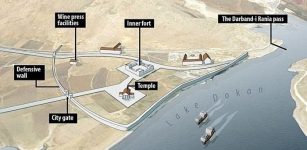 Lost City Of Alexander The Great Found After 2,000 Years In Iraq
Archaeology | Oct 1, 2017
Lost City Of Alexander The Great Found After 2,000 Years In Iraq
Archaeology | Oct 1, 2017 -
 Fossils In The ‘Cradle Of Humankind’ May Be More Than A Million Years Older Than Previously Thought
Archaeology | Jun 28, 2022
Fossils In The ‘Cradle Of Humankind’ May Be More Than A Million Years Older Than Previously Thought
Archaeology | Jun 28, 2022 -
 Modern Humans Have Their Homeland In Botswana – New Study
Archaeology | Oct 29, 2019
Modern Humans Have Their Homeland In Botswana – New Study
Archaeology | Oct 29, 2019 -
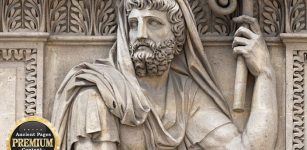 Numa Pompilius – Remarkable Second King Of Ancient Rome Who Succeeded Romulus – Did He Ever Exist?
Featured Stories | Dec 10, 2025
Numa Pompilius – Remarkable Second King Of Ancient Rome Who Succeeded Romulus – Did He Ever Exist?
Featured Stories | Dec 10, 2025 -
 Mystery Of Monte Albán – Ancient City ‘At The Foot Of The Heavens’ Built By The Zapotecs
Civilizations | Apr 22, 2016
Mystery Of Monte Albán – Ancient City ‘At The Foot Of The Heavens’ Built By The Zapotecs
Civilizations | Apr 22, 2016 -
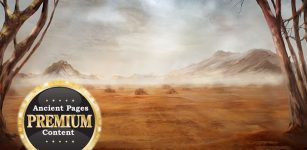 Ancient Desert Mystery – Did Thousands Vanish Without A Trace Because Of An Ominous Prophecy And Revenge?
Ancient Mysteries | Nov 28, 2022
Ancient Desert Mystery – Did Thousands Vanish Without A Trace Because Of An Ominous Prophecy And Revenge?
Ancient Mysteries | Nov 28, 2022 -
 Researchers Find An Elusive European Ancestor Of Lager Yeast In Ireland
Archaeology | Dec 14, 2022
Researchers Find An Elusive European Ancestor Of Lager Yeast In Ireland
Archaeology | Dec 14, 2022 -
 Incredible 2,300-Year-Old Roman-Etruscan Time Capsule Opened In San Casciano dei Bagni, Italy
Featured Stories | Dec 20, 2023
Incredible 2,300-Year-Old Roman-Etruscan Time Capsule Opened In San Casciano dei Bagni, Italy
Featured Stories | Dec 20, 2023 -
 Physical Evidence Of Ancient Atomic Wars Can Be Found World-Wide
Civilizations | Oct 6, 2015
Physical Evidence Of Ancient Atomic Wars Can Be Found World-Wide
Civilizations | Oct 6, 2015 -
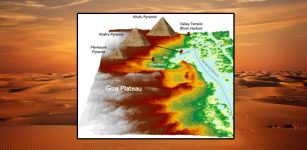 Why Were Egyptian Pyramids Built Along Long-Lost Ahramat Branch Of The Nile?
Archaeology | May 16, 2024
Why Were Egyptian Pyramids Built Along Long-Lost Ahramat Branch Of The Nile?
Archaeology | May 16, 2024 -
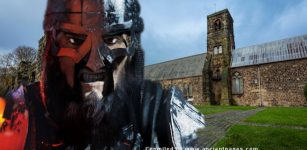 New Evidence Vikings Failed To Wipe Out Communities And Anglo-Saxon Monasteries
Archaeology | Jan 30, 2023
New Evidence Vikings Failed To Wipe Out Communities And Anglo-Saxon Monasteries
Archaeology | Jan 30, 2023 -
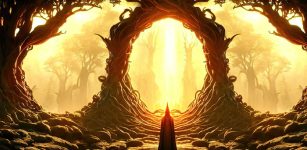 Mysterious Nine Worlds Of Yggdrasil – The Sacred Tree Of Life In Norse Mythology
Featured Stories | Mar 8, 2017
Mysterious Nine Worlds Of Yggdrasil – The Sacred Tree Of Life In Norse Mythology
Featured Stories | Mar 8, 2017 -
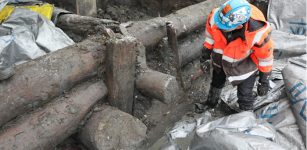 Why Did Archaeologists Destroy Medieval King’s Wharf After Excavations?
Archaeology | May 17, 2023
Why Did Archaeologists Destroy Medieval King’s Wharf After Excavations?
Archaeology | May 17, 2023 -
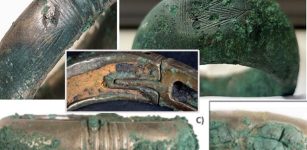 Intriguing Hoard Of Bronze Age Bracelets From Brittany, France Remains An Archaeological Puzzle
Featured Stories | Jan 30, 2024
Intriguing Hoard Of Bronze Age Bracelets From Brittany, France Remains An Archaeological Puzzle
Featured Stories | Jan 30, 2024 -
 4,000-Year-Old Temple With Mysterious Large Monolith Discovered In Cyprus
Archaeology | Jul 10, 2024
4,000-Year-Old Temple With Mysterious Large Monolith Discovered In Cyprus
Archaeology | Jul 10, 2024 -
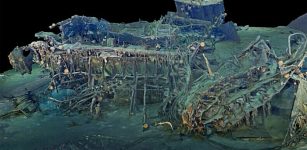 Wreckage From Famous Warships Explored In 3D On Anniversary Of Sinking
Archaeology | Nov 22, 2022
Wreckage From Famous Warships Explored In 3D On Anniversary Of Sinking
Archaeology | Nov 22, 2022 -
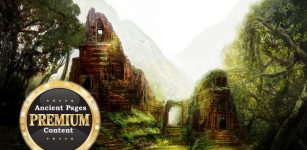 Ancient Monuments The World Is Not Allowed To See – Forbidden Zone – Part 2
Ancient Mysteries | Aug 27, 2020
Ancient Monuments The World Is Not Allowed To See – Forbidden Zone – Part 2
Ancient Mysteries | Aug 27, 2020 -
 Long-Lost Paleontological Site With More Than 100 Unique Fossils Re-Discovered In Brazil
Archaeology | Jul 4, 2022
Long-Lost Paleontological Site With More Than 100 Unique Fossils Re-Discovered In Brazil
Archaeology | Jul 4, 2022 -
 Ruins Of Sodom, Lost Ancient Biblical City Destroyed By God – Uncovered
Archaeology | May 5, 2015
Ruins Of Sodom, Lost Ancient Biblical City Destroyed By God – Uncovered
Archaeology | May 5, 2015 -
 Has The Mysterious Lost Capital Of The Ancient Kingdom Of Lyncestis Been Unearthed In Northern Macedonia?
Archaeology | Apr 11, 2025
Has The Mysterious Lost Capital Of The Ancient Kingdom Of Lyncestis Been Unearthed In Northern Macedonia?
Archaeology | Apr 11, 2025

